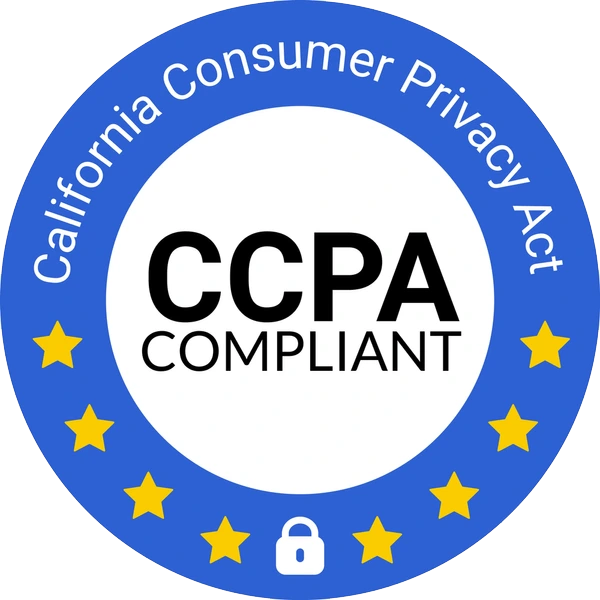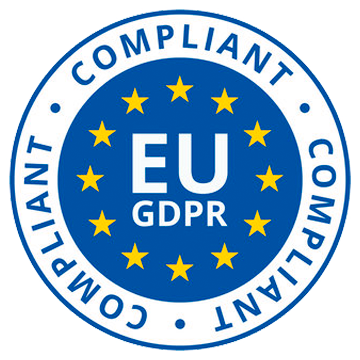Updated for 2025
In the world of digital communication, links play a crucial role in connecting different pieces of information together. Whether you’re browsing websites, reading articles, or exploring social media, links are the threads that weave the web together. Understanding the importance of links is key to enhancing user experience, improving lead generation, and optimizing deal workflows.
Share smarter links
With Sizle, every link is trackable. See who opens it, how long they stay and capture leads instantly.
Trusted by 30,000+ users. No credit card needed.
Understanding the importance of links
Links act as signposts, guiding users from one webpage to another. They allow us to navigate effortlessly through the vast expanse of the internet. Whether it’s a blog post, an online store, or a news article, we rely on links to gather information and access resources. Without links, the internet would be a disconnected collection of isolated pages.
Imagine a world without links. You come across an interesting article, but there’s no way to click on a link and explore further. You’d have to manually type in the URL, hoping you remember it correctly, or resort to searching for the information from scratch. It would be a tedious and time-consuming process, hindering our ability to explore and discover new content.
Links serve as the lifeblood of the internet, connecting websites and allowing us to seamlessly jump from one page to another. They provide a sense of continuity, enabling us to delve deeper into a topic or explore related information with just a click. Whether it’s a hyperlink embedded within a piece of text or a navigation menu guiding us to different sections of a website, links are the glue that holds the digital world together.
The role of links in digital communication
Links not only facilitate navigation but also play a crucial role in digital communication. They enable us to share information, cite sources, and connect ideas across different platforms. In the realm of social media, links allow us to share articles, videos, and other content with our friends and followers. They serve as pathways for knowledge exchange and foster meaningful discussions.
Moreover, links empower content creators to reference and acknowledge the work of others. By including links to relevant sources, they provide credibility and transparency, allowing readers to verify the information presented. This interconnected web of links forms the foundation of research, journalism, and academic discourse, enabling the dissemination of knowledge and the advancement of human understanding.
How to enhance user experience with links
Links play a vital role in improving user experience. When used effectively, they provide context, enable quick access to related content, and streamline navigation, making it easier for users to find what they’re looking for. By incorporating relevant links, website owners can create a seamless browsing experience that keeps users engaged and encourages them to spend more time exploring their content.
Imagine visiting a website with no links. You would be stuck on a single page, unable to explore further or access additional information. It would be a frustrating experience, hindering your ability to find answers to your questions or discover related topics. However, when a website is well-linked, you can effortlessly navigate through various sections, delve deeper into specific subjects, and discover a wealth of valuable resources.
Effective use of links can also enhance accessibility for users with disabilities. Screen readers, for example, rely on links to provide a comprehensive browsing experience for visually impaired individuals. By properly labeling and structuring links, website owners can ensure that everyone, regardless of their abilities, can access and navigate their content with ease.
In conclusion, links are the backbone of the internet, connecting information, facilitating communication, and enhancing user experience. They allow us to explore the vast digital landscape, discover new content, and navigate seamlessly between websites. Understanding the importance of links is crucial for both content creators and users, as they enable the sharing of knowledge, foster engagement, and empower us to make the most of the digital realm.
Different types of links
Links are an essential part of the internet experience, connecting webpages and allowing users to navigate between different sources of information. There are various types of links, each serving a specific purpose and providing unique functionalities. In this article, we will explore some of the most common types of links and their significance in web design and user interaction.
Hyperlinks in text
Text hyperlinks are the most common type of link you’ll encounter on the internet. They are typically displayed as underlined and colored text, indicating that they can be clicked to access additional information. When creating a text hyperlink, it’s important to choose meaningful anchor text that accurately describes the link’s destination.
Text hyperlinks play a crucial role in enhancing the user experience by providing a seamless way to navigate through different webpages. They allow users to explore related content, access external resources, and delve deeper into specific topics. By incorporating text hyperlinks strategically within the content, website owners can guide users towards relevant information and encourage further engagement.
Furthermore, text hyperlinks are not only beneficial for users but also play a significant role in search engine optimization (SEO). Search engines use hyperlinks to discover new webpages and determine the relevance and authority of a website. By incorporating well-structured and relevant text hyperlinks, website owners can improve their website’s visibility and organic search rankings.
Image links
Image links are another popular form of hyperlink. Instead of using text, these links are embedded within images and are also clickable. Image links can be particularly useful for visually oriented websites, such as online stores or graphic design portfolios. When using image links, it’s important to consider accessibility and provide alternative text descriptions for screen readers.
Visual elements are powerful tools for capturing users’ attention and conveying information quickly. By incorporating image links, website owners can create visually appealing and interactive experiences for their visitors. For example, an online store can use image links to showcase products, allowing users to click on the images to view more details or make a purchase.
However, it’s important to strike a balance between aesthetics and usability when using image links. While images can enhance the overall visual appeal of a website, they should not compromise the accessibility of the content. Providing alternative text descriptions for screen readers ensures that visually impaired users can still understand the purpose and context of the image links.
Email and telephone links
Links can extend beyond webpages. Email and telephone links allow users to communicate directly with a website owner or business. Email links trigger an email client to open, pre-filling the recipient’s email address. Telephone links, on the other hand, initiate a call when clicked on a mobile device. These types of links can facilitate quick and convenient communication with customers or potential leads.
In today’s digital age, communication plays a vital role in establishing and maintaining relationships with customers. By incorporating email and telephone links, website owners can provide a seamless way for users to get in touch. Whether it’s for inquiries, support, or business opportunities, these links enable users to initiate direct communication with just a click or tap.
Furthermore, email and telephone links can be particularly valuable for businesses that rely on customer interactions, such as service providers or e-commerce platforms. By making it easy for users to contact them, businesses can enhance customer satisfaction, address concerns promptly, and potentially increase conversions or sales.
In conclusion, links are an integral part of web design and user experience. Whether it’s text hyperlinks, image links, or email and telephone links, each type serves a unique purpose in connecting users with relevant information or facilitating communication. By understanding the different types of links and incorporating them effectively, website owners can enhance the usability, accessibility, and overall engagement of their websites.
Create a link
Creating a link is a fundamental aspect of web design and content creation. It not only allows users to navigate through your website but also plays a crucial role in search engine optimization (SEO) and user experience. However, before you dive into the process of creating a link, there are a few important considerations to keep in mind.
Choosing the right Anchor Text
The anchor text of a link is the visible, clickable text that users see on a webpage. It serves as a concise description of the linked content and can significantly impact the effectiveness of your link. When choosing anchor text, it’s crucial to avoid using generic phrases like “click here” or “read more.” Instead, opt for descriptive words that accurately reflect the content users will find when they click the link.
For example, if you are linking to an article about the benefits of exercise, consider using anchor text like “Discover the health benefits of exercise” or “Learn how exercise can improve your well-being.” By using descriptive and relevant anchor text, you provide users with a clear expectation of what they will find when they click the link.
Identifying the Destination URL
Before creating a link, it’s essential to identify the destination URL—the web address where the link will lead users. The destination URL should be accurate and up to date to ensure a seamless user experience. Broken or outdated links can frustrate users and harm your website’s credibility.
Double-check that the destination URL is correct and that it leads to the intended content. This step is particularly important if you are linking to external websites. Verify that the website you are linking to is reputable and trustworthy to maintain the integrity of your own website.
Additionally, consider using descriptive filenames for your web pages and documents. This practice not only helps you organize your files but also makes it easier for users to understand the content they will find when they click the link. For example, instead of using a generic filename like “page1.html,” use a more descriptive one like “benefits-of-exercise.html.”
By carefully considering the anchor text and destination URL, you can create effective and user-friendly links that enhance the overall browsing experience. Remember, the goal is to provide users with valuable and relevant content, and well-crafted links are a powerful tool in achieving that objective.
Creating a link in HTML
When it comes to creating a link in HTML, the process is relatively straightforward. It involves using the anchor tag () and the href attribute to specify the destination URL. This allows you to seamlessly connect different web pages and provide a smooth user experience.
To illustrate, let’s say you want to create a link to a website called “example.com.” In this case, you would use the following code:
By placing the desired anchor text between the opening and closing tags, you have the ability to customize the text displayed to users. This flexibility allows you to create visually appealing and contextually relevant links that can capture the attention of your audience.
Adding Title and Target Attributes
HTML offers additional attributes that can be used in link creation, such as the title and target attributes. These attributes provide further customization options and enhance the overall user experience.
The title attribute, for instance, allows you to provide additional information when users hover over the link. By including a descriptive title, you can give users a preview of the linked content, enticing them to click and explore further.
On the other hand, the target attribute determines how the linked page should open. This attribute gives you control over whether the link should open in a new tab or the current window. By specifying the target attribute, you can ensure that the user’s browsing experience aligns with your intended design and functionality.
With the combination of the href, title, and target attributes, you have the power to create dynamic and engaging links that not only connect web pages but also provide valuable information to users. By leveraging these attributes effectively, you can enhance the usability and interactivity of your website.
Creating a Link in WordPress
Using the WordPress editor for links
WordPress, a popular content management system, offers a user-friendly editor that simplifies link creation. In the editor, highlight the text or image you want to turn into a link, then click the link icon. A popup will appear, allowing you to enter the destination URL and customize the anchor text. WordPress handles the HTML code generation behind the scenes, making it easy for even non-technical users to create links.
Linking to Posts, Pages and external sites
In WordPress, you can create links to internal posts, pages, and external websites. To link to an internal post or page, use the search feature within the link popup to find the desired content. WordPress will automatically generate the appropriate link. For external sites, enter the full URL in the link field. WordPress will make sure the link opens in a new tab by default, preventing users from leaving your website entirely.
Creating links is a fundamental skill for anyone involved in digital communication. By understanding different types of links and how to create them, you can greatly enhance user experience, improve lead generation, and optimize deal workflows. Whether you’re using basic HTML or a more advanced content management system like WordPress, the ability to link effectively is an essential tool in the digital era.
For a secure and user-friendly link sharing platform, visit Sizle.io and explore how we can help you create and manage your links efficiently.
Frequently Asked Questions (FAQ)
What is a hyperlink?
A hyperlink is a clickable element in a digital document that links to another section of the same document or to a different document entirely. Hyperlinks are typically displayed as underlined and colored text or clickable images.
How do I create a hyperlink in HTML?
To create a hyperlink in HTML, use the anchor tag () and the href attribute to specify the destination URL. For example:
Can I use images as hyperlinks?
Yes, you can use images as hyperlinks by embedding the image within the anchor tag.
What is anchor text, and why is it important?
Anchor text is the visible, clickable text in a hyperlink. It is important because it provides context about the linked content, improving user experience and search engine optimization (SEO).
How do I add a hyperlink in WordPress?
In WordPress, highlight the text or image you want to turn into a link, click the link icon in the editor, enter the destination URL, and customize the anchor text. WordPress generates the necessary HTML code automatically.
What are email (mailto) and telephone (tel) links?
Email and telephone links are hyperlinks that initiate email or phone communication. Email links open the user’s email client with a pre-filled recipient address, while telephone links initiate a call on mobile devices.
Why should I use descriptive filenames for my web pages?
Using descriptive filenames for web pages helps users understand the content they will find when they click the link. It also aids in organizing your files and improving search engine optimization (SEO).
How can I enhance accessibility with hyperlinks?
To enhance accessibility, ensure that hyperlinks are properly labeled and structured. Use descriptive anchor text, provide alternative text for image links, and avoid using generic phrases like “click here.”.
For more information on creating and managing links, visit Sizle.io, the secure link sharing platform designed to help you efficiently manage your hyperlinks and enhance your digital communication strategy.
Turn docs into deal intelligence
Sizle shows what really happens after you hit send.
Free 7-day trial
Unlock insights instantly
Join 30,000+ professionals



